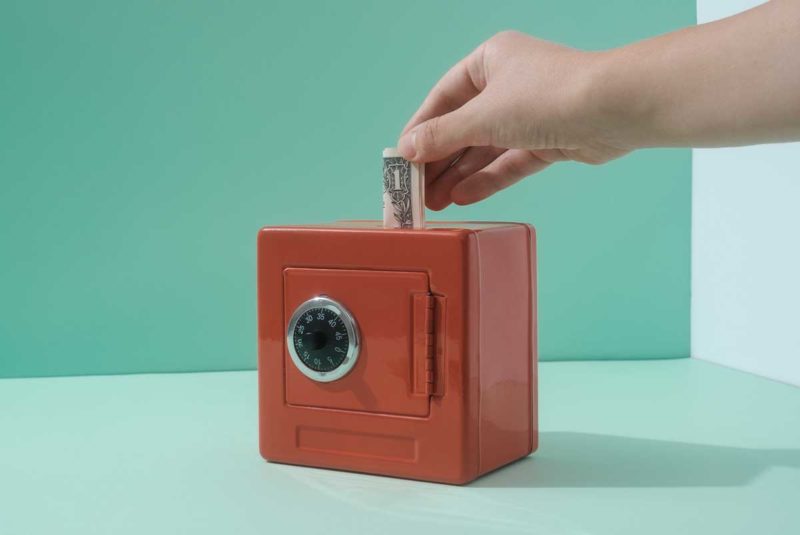When you’re in the market for a new credit card, you’ll see one term a lot: APR.
But without a basis of comparison, it’s hard to know: What is a good APR for a credit card?
Here’s how to tell — and why it may matter less than you think.
What Is APR?
APR stands for annual percentage rate; in other words, the interest rate you’ll pay on your credit card.
Generally, APR refers to the “purchase APR,” which is the interest you’ll owe on everyday purchases.
Note, however, each credit card has multiple APRs: You may pay a different APR on cash advances and balance transfers, for example, and also after missing a payment (known as a penalty APR). Purchase and balance transfer APRs are usually the same, while cash advance APRs are usually higher.
What Is a Good APR for a Credit Card?
Unfortunately, there’s no simple answer to this question. Since APRs are highly variable, what’s good for one person may not be good for another.
The important thing to remember? The lower your APR, the better.
As you will see, the range for APRs is pretty big. Rewards cards often have high APRs because they offer more benefits. Store credit cards also come with high APRs, which is one reason we don’t recommend them.
When you apply for a new credit card, it’ll usually list an APR range, but the exact percentage will depend on:
- The “prime rate”: The Federal Reserve determines this interest rate based on the state of the economy.
- Your credit scores: People with excellent credit scores qualify for the lowest rates, whereas people with poor credit scores will have higher rates.
How to Get a Good APR
While APRs are partially determined by national interest rates — which you have no control over — you can change the other factor: your credit scores.
When you have good credit scores, credit card issuers will trust you more and offer you lower APRs.
The first step toward lower APRs is checking your credit reports and credit scores. Then, once you know where you’re starting from, you can take these three quick steps to improve your credit:
- Pay your bills on time, every time: Missing payments is one of the most detrimental credit behaviors. Put your bills on autopay so you’re never late.
- Pay off outstanding balances: Another important component is your credit utilization ratio, which is the sum of your total balances divided by your total available credit. The less of your available credit you’re using, the better your credit scores.
- Ask for a credit limit increase: Raising your credit limit will also improve your credit utilization ratio — to get an increase, often all you need to do is call your issuer and ask.
Lastly, if you already have a credit card whose APR you’d like to lower, call your credit card issuer. If you’ve been a responsible user — and have paid your bills on time — it might be willing to lower your APR.
But remember: You won’t incur any interest charges on your purchases if you pay your statement balance in full each month, which makes your purchase APR pretty much irrelevant.
3 Types of Credit Cards With Good APR
Looking for a credit card with a good APR? Here are three avenues you might want to consider.
Credit union credit cards
Since credit unions can’t offer all the bells and whistles of big banks, they often offer lower credit card APRs.
0% APR credit cards
While it might seem too good to be true, some credit card offers include a 0% introductory APR for a limited time (usually 12–18 months).
Most people get these cards for one of two reasons:
- To make a large purchase: Let’s say you want to fix your car so you can get to your new job, or need some supplies to start a side hustle. A 0% APR card will allow you to, essentially, loan yourself some money that you’ll be able to pay back over the next year.
- To transfer a balance: If you already have a credit card balance on which you’re paying a high interest rate, you could do a balance transfer to a card with a lower interest rate.
In both of these situations, a 0% APR card could save you money in the long run. But you should strive to pay off any outstanding balance before the 0% intro APR period is over — because that’s when the card will convert to a higher APR.
When you visit MoneyTips, we want you to know that you can trust what’s in front of you. We are an authoritative source of accurate and relevant financial guidance. When MoneyTips content contains a link to partner or sponsor affiliated content, we’ll clearly indicate where that happens. Any opinions, analyses, reviews or recommendations expressed in our content are of the author alone, and have not been reviewed, approved or otherwise endorsed by the advertiser.
We make every effort to provide up-to-date information; however, we do not guarantee the accuracy of the information presented. Consumers should verify terms and conditions with the institution providing the products. Some articles may contain sponsored content, content about affiliated entities or content about clients in the network. While reasonable efforts are made to maintain accurate information, the information is presented without warranty.
Low-interest credit cards
If you want to continually keep a balance on a card — rather than just make one purchase or balance transfer — you should look for a low-interest credit card.
Most cards come with an APR range, like 13% – 24%. But there are a few that will provide a specific APR to anyone who’s approved, so you can know what you’ll get ahead of time.
That said, we generally recommend 0% APR credit cards over low-interest credit cards. Low-interest cards are only better if you won’t be able to pay off your balance before a 0% card’s introductory APR ends.
If your intro APR period is running out, but you still have a lot to pay off, consider transferring the balance to another 0% card to give yourself more time.
Why Good APRs Matter Less Than You Think
While it’s good to understand APRs, it’s even better to not have to worry about them when choosing your credit card.
Here’s why: If you pay your credit card bill in full each month, you’ll never pay any interest charges on purchases — and will therefore render APRs mostly irrelevant.
Many of the best credit cards, in fact, come with high APRs. In the past, you may have wondered whether the perks of rewards cards are worth their high interest rates.
Now you know: The holders of those top cards probably aren’t worried about the APR because they make their monthly payments in full. Hopefully, you will too!
The Short Version
- The lower your APR, the better. Some cards offer rates as low as 0% for a certain period of time
- When you have good credit scores, credit card issuers will trust you more and offer you lower APRs
- APRs don’t matter too much for credit cards, because if you pay your statement balance in full each month you can avoid interest charges altogether




